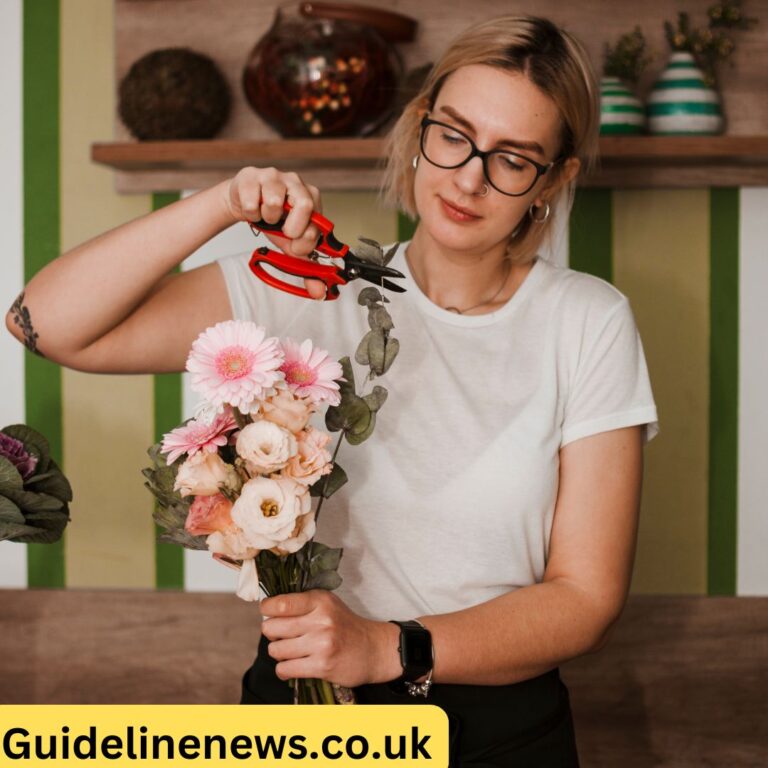Introduction
Corsages are more than simply floral add-ons—they’re symbols of affection, celebration, and unique activities. Whether they’re worn to weddings, proms, or other formal occasions, corsages add a touch of elegance and sentimentality to any outfit. This manual dives into the whole thing you want to know about corsages: their records, styles, occasions to put on them, and tips on selecting or maybe growing one in every one of your personal. With this designated perception, you’ll be ready to choose the ideal corsage for any event.
Outline
- Introduction
- Background
- Types of Corsages
- Popular Flowers for Corsages
- Occasions for Wearing Corsages
- How to Select the Right Corsage
- DIY Corsage Tips
- Conclusion
- FAQs
Background
Corsages have a rich history, originating from the French phrase “bouquet de corsage,” which means “bouquet of the bodice.” Historically, small flower bunches have been worn with the aid of women as part of formal attire. They were believed to carry precise success and shield the wearer from misfortune. Over time, corsages evolved into small, carefully arranged floral portions worn at the wrist or pinned to garb, symbolizing love, respect, and party.
Today, corsages are a staple at diverse events, in particular formal gatherings wherein subculture and beauty are liked. While floral corsages stay the most popular, some present day variations use non-floral materials, inclusive of ribbons, beads, and feathers, providing a fresh twist on a traditional accessory.
What is a corsage?
A corsage is a small bouquet of flowers frequently worn at the wrist or pinned to apparel, symbolizing honor and admiration for the wearer. Commonly provided with the aid of a date or cherished one at formal events, corsages add a touch of beauty to outfits.
Types of Corsages
- Pin-On Corsages: Traditionally worn on the shoulder or chest, those corsages are pinned to a dress, shirt, or jacket. They require delicate handling to avoid unfavorable the garb; however, it can be elegantly positioned to supplement the outfit.
- Wrist Corsages: Especially popular for proms and weddings, wrist corsages are attached to a flexible band or bracelet. They are clean to put on, don’t interfere with clothing, and allow the wearer to have their hands unfastened.
- Shoulder and Handbag Corsages: Less common but gaining popularity, shoulder corsages are usually worn by moms of the bride or groom. Handbag corsages attach directly to a purse, including a completely unique flair without interfering with the apparel.
Popular Flowers for Corsages
- Roses: Roses are conventional corsage plants, symbolizing love and admiration. Miniature spray roses are especially popular for wrist corsages.
- Orchids: Elegant and unusual, orchids add a sophisticated touch to any corsage. They are often used in weddings and high-end events.
- Lilies: Lilies are an image of purity and splendor, making them an adorable desire for corsages at weddings and formal activities.
- Carnations: Known for their longevity and availability in various colors, carnations are price range-pleasant and flexible corsage plant life.
- Choosing Colors and Flower Meanings: Colors play a big role in flower arrangements. For example, red roses signify love, white lilies represent purity, and red carnations signify gratitude. Choosing a color that resonates with the event provides a private touch to the corsage.
Occasions for Wearing Corsages
- Weddings: In weddings, corsages are commonly worn with the aid of the mothers and grandmothers of the bride and groom. Sometimes, close women in households or unique visitors also wear corsages to indicate their importance.
- Proms: Corsages are important for promenade subculture, in which they’re generally exchanged among dates. Wrist corsages are in particular popular because of their ease of wear and ultra-modern look.
- Graduations: Some faculties and families gift corsages to graduates as a token of feat. They add a touch of festivity to the commencement attire.
- Other Special Events: Corsages can also be worn at different significant events, which include child showers, Mother’s Day celebrations, and milestone anniversaries, where they function as a small but significant gesture of appreciation.
How to Select the Right Corsage
Choosing the right corsage depends on several factors:
- Matching Outfits: The corsage has to supplement the apparel. For a cohesive look, fit the vegetation or colors with the outfit or every other accessory.
- Event Themes: Some events have precise colour themes. In such cases, coordinate the corsage colours to align with the event’s palette.
- Personal Style and Preferences: It’s crucial to don’t forget the wearer’s non-public style. Some might also decide on minimalist corsages with only a few small plants, while others may enjoy a fuller arrangement with ribbons and embellishments.

DIY Corsage Tips
Creating a corsage at home may be a rewarding experience. Here’s a short manual to creating a simple wrist corsage:
- Materials Needed: Fresh or artificial flowers, floral tape, scissors, ribbons, corsage bracelets or elastic bands, and floral wire.
- Prepare the Flowers: Trim the flowers to a quick period and get rid of any extra leaves.
- Arrange the Flowers: Place the flora in your chosen arrangement, balancing huge and small blooms.
- Secure with Floral Tape: Wrap the stems with floral tape to preserve the arrangement collectively.
- Attach to the Band: Use floral twine or tape to attach the flower association to a bracelet or elastic band.
- Add Ribbon: Decorate the corsage with ribbons for added flair.
DIY corsages permit for personalization, making it feasible to create a unique design that suits the wearer’s fashion and the event’s topic.
Conclusion
Corsages are timeless accessories that hold a special place in lots of formal celebrations. From weddings to proms and past, corsages represent love, recognition, and joyful celebration. With numerous types, flower choices, and patterns, there’s a corsage suitable for each personality and event. Whether you’re choosing one from a florist or developing a DIY model, a well-crafted corsage enhances the overall appearance and sense of an occasion, making moments even more memorable.
FAQs
Q1. How long do corsages remain?
Fresh flower corsages normally close 1-2 days if stored in a groovy area. Refrigerating them can help enlarge their freshness till they’re prepared to be worn.
Q2. Can I make a corsage with artificial plants?
Yes, artificial flowers are a durable choice, specifically for keepsakes. Silk or paper flowers are popular alternatives for lengthy-lasting corsages.
Q3. What is the difference between a corsage and a boutonniere?
A corsage is generally large and worn by ladies, while a boutonniere is a single flower or a small association worn by guys, normally on the lapel.
Q4. Can corsages be reused?
Fresh flower corsages can be preserved as keepsakes, despite the fact that they lose their authentic look. Artificial flower corsages can be reused for comparable activities.
Q5. Where can I buy a corsage?
Corsages are available at florists, some craft stores, and online floral shops. Many people also choose to make their personal for a customized contact.
Q6. What is the great way to preserve a corsage?
To hold a fresh corsage, try drying it or pressing the plants. Artificial corsages may be stored in a box or show case to keep them in suitable circumstances.
Q7. Are there particular plants that have to now not be utilized in corsages?
Flowers with strong scents or sensitive petals, like lilacs or gardenias, might not be perfect as they could wilt speedy or cause allergies. Roses, orchids, and lilies are more durable options suitable for corsages.

